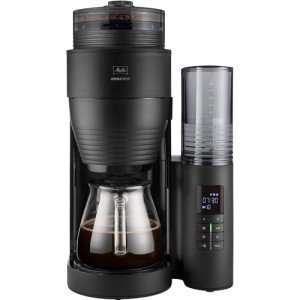A Comprehensive Guide to Espresso Machines: Types, Features, and FAQs
Espresso machines have become a staple in coffee culture, captivating both enthusiasts and casual drinkers alike. As the need for high-quality coffee increases, comprehending the range of espresso machines available and their functions becomes essential. This post intends to provide an in-depth exploration of espresso machines, covering their types, functionalities, and what to consider when purchasing one.
Kinds Of Espresso Machines
Espresso machines come in numerous styles, each with special functions, advantages, and compatibility with various developing approaches. Below, we go over the main kinds of espresso machines readily available on the marketplace:
| Type | Description | Target User |
|---|---|---|
| Handbook Espresso Machines | These require the user to physically run the machine, providing total control over the brewing process. | Coffee purists and lovers |
| Semi-Automatic Machines | These machines automate the water pressure but require manual input for developing time. | Intermediate users |
| Fully Automatic Machines | These machines do whatever automatically, from grinding the beans to brewing the coffee. | Busy experts |
| Super-Automatic Machines | These machines are completely automated and can produce numerous coffee beverages with very little user intervention. | Users looking for convenience |
| Capsule Espresso Machines | These utilize pre-packaged coffee pills to streamline the developing process. | Casual drinkers |
| Industrial Espresso Machines | Heavy-duty machines created for high-volume usage, generally discovered in coffee shops and restaurants. | Coffee shop owners and aficionados |
1. Handbook Espresso Machines
Manual espresso machines provide unmatched personalization for coffee lovers who value the art of developing. Users should practice techniques such as tamping and pump pressure to create the perfect shot of espresso.
2. Semi-Automatic Machines
These machines strike a balance between user control and automation. They automate water circulation however require the barista to manage the brewing time. Coffeee -automatics are popular amongst home baristas who want to refine their skills without the intricacy of totally manual machines.
3. Fully Automatic Machines
Completely automatic machines get rid of much of the uncertainty associated with brewing. They grind, dosage, and extract espresso with one touch of a button, making them best for users who value speed and consistency.
4. Super-Automatic Machines
Super-automatic machines take benefit to the next level. They can prepare an outstanding array of drinks, from espresso to cappuccino, with little to no user input, making them ideal for busy homes or work environments.
5. Capsule Espresso Machines
Capsule machines, such as those from Nespresso or Keurig, utilize pre-packaged pods that streamline the developing procedure. While they use convenience, the range of taste and freshness may be restricted compared to entire coffee beans.
6. Commercial Espresso Machines
Created for heavy usage, business machines are constructed to produce high-quality espresso quickly and consistently. They often feature sophisticated innovation like multi-boiler systems and built-in grinders.
Functions to Consider When Choosing an Espresso Machine
When selecting an espresso machine, buyers need to consider a number of important aspects, as these will greatly impact the general developing experience and the quality of the coffee produced. Here are essential features to examine:
Boiler Type
- Single Boiler: Good for those who brew primarily espresso.
- Dual Boiler: Allows for developing espresso and steaming milk concurrently.
- Heat Exchanger: Provides high pressure for espresso while enabling steaming.
Mill
- Integrated Grinder: Offers convenience with integrated options for grinding coffee.
- Different Grinder: Provides versatility and the choice to pick the grinder best suited to your tastes.
Portafilter Size
- Standard: Usually 58mm, fits most machines and provides excellent extraction.
- Smaller Sized Sizes: Often discovered in lower-end machines, which might affect flavor.
Reduce of Use
- User-Friendly Controls: Essential for beginners or hectic individuals.
- Personalization Features: Important for enthusiasts who choose hands-on brewing.
Cleaning up and Maintenance
- Removable Parts: Facilitate easy cleaning.
- Automatic Cleaning Systems: Helpful for maintaining the machine's efficiency.
Size and Design
- Counter Space: Ensure the machine will fit in your kitchen area.
- Aesthetic Appeal: Consider the machine's overall style to match your kitchen decoration.
Frequently Asked Questions about Espresso Machines
What is the difference between espresso and regular coffee?
Espresso is brewed by forcing hot water through finely-ground coffee under pressure, resulting in a concentrated shot with a rich taste and crema. Routine coffee is normally brewed using approaches like drip or pour-over, which use larger coffee grounds and produce a lighter taste.
How do I preserve my espresso machine?
Routine maintenance includes descaling the machine, cleaning the portafilter and group head, clearing the drip tray, and replacing any water filters. Automatic machines often have built-in cleaning programs.
Can I utilize routine coffee beans in an espresso machine?
While you can technically use routine coffee beans, espresso is best made with beans particularly roasted for espresso. These beans are typically darker and more oily, offering the rich taste and strong scent that espresso is understood for.
How can I enhance my espresso-making abilities?
Practice is essential! Try out various grinds, tamping methods, and extraction times. Consider utilizing a scale to measure coffee and water precisely. Enjoying tutorials online can likewise offer insights into innovative techniques.
What is the average cost variety for a great espresso machine?
Prices can vary considerably based upon type and functions. Fundamental manual machines begin around ₤ 100, while high-end super-automatic machines can cost over ₤ 2,000. Semi-automatic machines generally vary from ₤ 300 to ₤ 1,500.
Espresso machines offer a broad spectrum of choices, each accommodating various choices, experiences, and budgets. Understanding the varieties readily available and the necessary functions can assist customers make notified decisions that lead to delicious, café-quality espresso in the comfort of their homes. Whether one seeks to indulge in rich flavors or requires a convenient developing service, an espresso machine can elevate the coffee experience beyond the daily cup.

